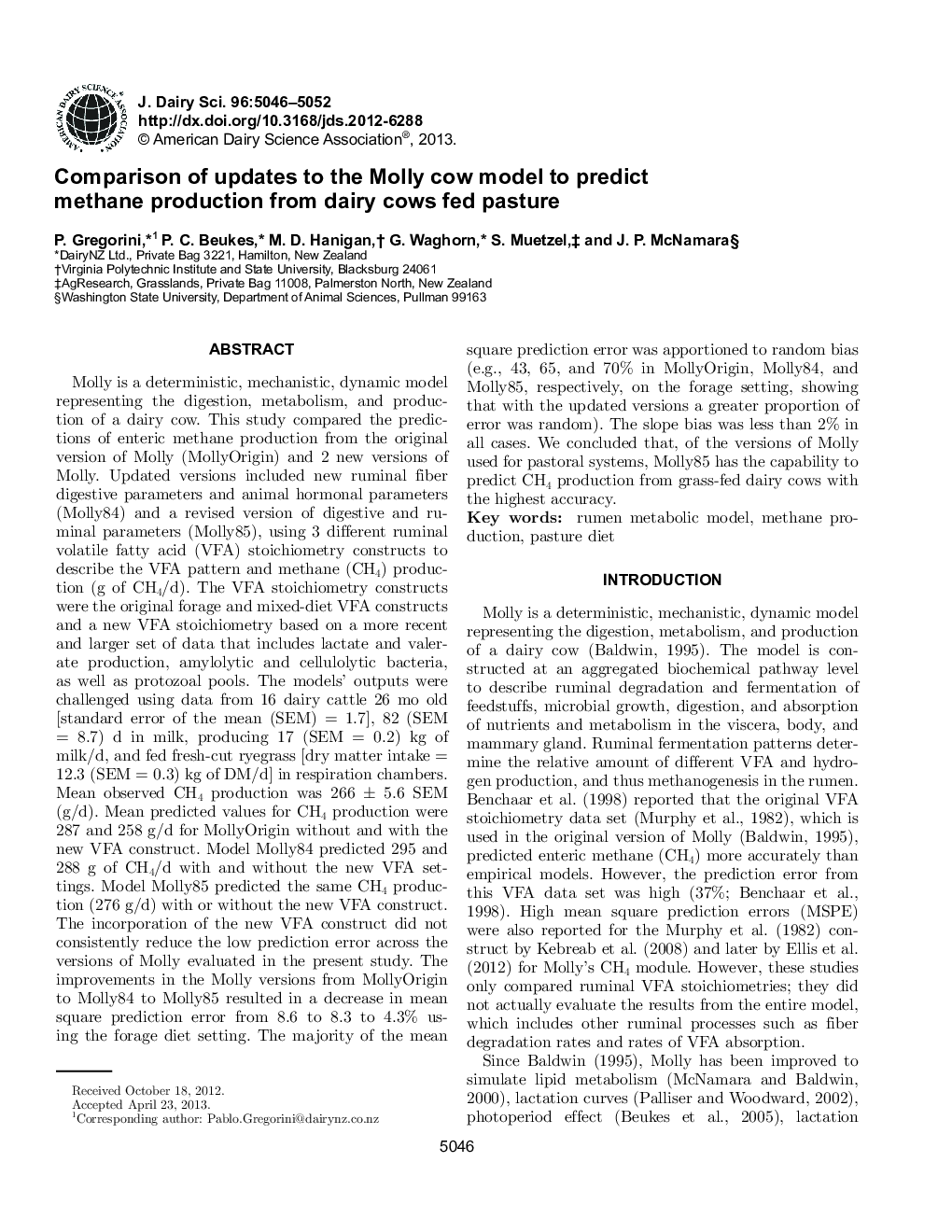| کد مقاله | کد نشریه | سال انتشار | مقاله انگلیسی | نسخه تمام متن |
|---|---|---|---|---|
| 2438885 | 1108051 | 2013 | 7 صفحه PDF | دانلود رایگان |
عنوان انگلیسی مقاله ISI
Comparison of updates to the Molly cow model to predict methane production from dairy cows fed pasture
دانلود مقاله + سفارش ترجمه
دانلود مقاله ISI انگلیسی
رایگان برای ایرانیان
کلمات کلیدی
موضوعات مرتبط
علوم زیستی و بیوفناوری
علوم کشاورزی و بیولوژیک
علوم دامی و جانورشناسی
پیش نمایش صفحه اول مقاله

چکیده انگلیسی
Molly is a deterministic, mechanistic, dynamic model representing the digestion, metabolism, and production of a dairy cow. This study compared the predictions of enteric methane production from the original version of Molly (MollyOrigin) and 2 new versions of Molly. Updated versions included new ruminal fiber digestive parameters and animal hormonal parameters (Molly84) and a revised version of digestive and ruminal parameters (Molly85), using 3 different ruminal volatile fatty acid (VFA) stoichiometry constructs to describe the VFA pattern and methane (CH4) production (g of CH4/d). The VFA stoichiometry constructs were the original forage and mixed-diet VFA constructs and a new VFA stoichiometry based on a more recent and larger set of data that includes lactate and valerate production, amylolytic and cellulolytic bacteria, as well as protozoal pools. The models' outputs were challenged using data from 16 dairy cattle 26 mo old [standard error of the mean (SEM) = 1.7], 82 (SEM = 8.7) d in milk, producing 17 (SEM = 0.2) kg of milk/d, and fed fresh-cut ryegrass [dry matter intake = 12.3 (SEM = 0.3) kg of DM/d] in respiration chambers. Mean observed CH4 production was 266 ± 5.6 SEM (g/d). Mean predicted values for CH4 production were 287 and 258 g/d for MollyOrigin without and with the new VFA construct. Model Molly84 predicted 295 and 288 g of CH4/d with and without the new VFA settings. Model Molly85 predicted the same CH4 production (276 g/d) with or without the new VFA construct. The incorporation of the new VFA construct did not consistently reduce the low prediction error across the versions of Molly evaluated in the present study. The improvements in the Molly versions from MollyOrigin to Molly84 to Molly85 resulted in a decrease in mean square prediction error from 8.6 to 8.3 to 4.3% using the forage diet setting. The majority of the mean square prediction error was apportioned to random bias (e.g., 43, 65, and 70% in MollyOrigin, Molly84, and Molly85, respectively, on the forage setting, showing that with the updated versions a greater proportion of error was random). The slope bias was less than 2% in all cases. We concluded that, of the versions of Molly used for pastoral systems, Molly85 has the capability to predict CH4 production from grass-fed dairy cows with the highest accuracy.
ناشر
Database: Elsevier - ScienceDirect (ساینس دایرکت)
Journal: Journal of Dairy Science - Volume 96, Issue 8, August 2013, Pages 5046-5052
Journal: Journal of Dairy Science - Volume 96, Issue 8, August 2013, Pages 5046-5052
نویسندگان
P. Gregorini, P.C. Beukes, M.D. Hanigan, G. Waghorn, S. Muetzel, J.P. McNamara,